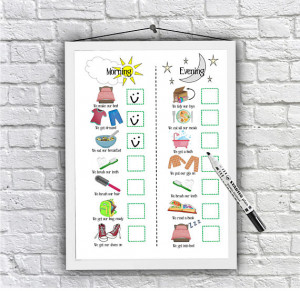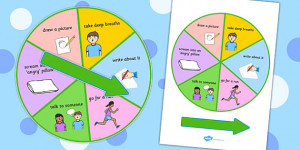Autism Series XIII: The Power of Making Choices
Autism Series XIII: The Power of Making Choices
Improved social skills and behaviors, Each one of us regularly makes choices throughout a day. Children with delays and those within the Autism Spectrum Disorder (ASD) may find it difficult to indicate their choices (due to the inability to communicate effectively) or may not be able to make choices (due to the lack of effective decision making in specific social situations). Therefore, it is imperative to teach the skill to make ‘choices’ to build communication and independence in children with ASD.
A better understanding of choice making as well as Strategies to develop the skill are discussed further, through three scenarios:
Scenario 1:
A young child comes to the Kitchen, where you are fixing a meal. He moves to the fridge, even brings you there by pulling you towards it. You ask him,’ What do you want?’ All he does is cry; intermittently looking at the fridge and tugging you closer and closer to it.
There is a breakdown of communication here. The parent is unable to understand what the child is trying to communication. At times, a parent may understand that the child is hungry and pull a few things out of the fridge, but it may not be what the child wants. Thereby building frustration in the child and maybe leading to a meltdown. There needs to be an effective way that child can communicate and indicate his need(s).
Using choices for Communication:
-
Provide the child choices.
 By giving the child choices, s/he will be able to communicate a need effectively.
By giving the child choices, s/he will be able to communicate a need effectively.
It can be as simple as showing two food items to the child (when s/he is hungry). Such as, holding out a ‘biscuit’ and ‘apple’ in front of a child. This will allow the child to make a choice and ‘tell’ a need/ want.
-
Begin with a limited number of choices.
For children with limited skills, begin by providing two choices. By keeping it simple, choices can be easily made. Too many choices can be confusing and make the strategy inefficient, at times.
-
Use visuals when choices are given (visual board- how to make).
 Children with ASD learn and focus well with the aid of visuals (photos, pictures, miniature objects etc). When giving choices to the child, it becomes more efficient when visuals are used. A visual choice board is one such way.
Children with ASD learn and focus well with the aid of visuals (photos, pictures, miniature objects etc). When giving choices to the child, it becomes more efficient when visuals are used. A visual choice board is one such way.
Learn how to make a visual choice board at home (click here).
-
Teach the child how to make choices (pointing, looking, picking up)
 Although the choice board or objects are in front of the child, s/he may not know how to indicate a need. It becomes essential for an adult/therapist to teach the child an appropriate manner of making the choice.
Although the choice board or objects are in front of the child, s/he may not know how to indicate a need. It becomes essential for an adult/therapist to teach the child an appropriate manner of making the choice.
This can be by pointing (finger, hand or eye pointing), picking up the object or picture of choices or even telling the choice.
-
Provide opportunities for the child to make choices (to express himself effectively).
It is essential to seek out situations where you can allow the child to use the newly developed skill. Provide choices often during daily routine tasks such as mealtime, bathing time etc.
This strategy does not only apply to children who are non-verbal. Even verbal children with ASD may benefit from it. At times, the child may not be able to use the right words at the right time, to tell his need. Visual choices can assist the child to tell his need more effectively.
Improved social skills and behaviors
Scenario 2:
You tell your child to get ready to go out. He (Child A) has just woken up. Child A needs to be told, step by step that he needs to brush his teeth, choose clothes for a bath, comb his hair etc.
Although the child has skills for each activity (such as bathing, combing hair etc), he needs to be guided to the task needed. He is unable to prioritize activities to complete the task (of ‘going out’). This breaks down independence. Therefore, independence needs to be built through choice making boards as well as using them effectively.
Choices for building independence:
-
Visual Choices (for daily routines or tasks that need independence):
 Choices need be made for several aspects of daily activities. This includes ‘what clothes to wear’, ‘which shoes to put on’ etc. At times, children with ASD may find it difficult to make the choices or know which choices to make. With an instruction (of which choice to make)– from an adult – the child will be able to follow through with a choice.
Choices need be made for several aspects of daily activities. This includes ‘what clothes to wear’, ‘which shoes to put on’ etc. At times, children with ASD may find it difficult to make the choices or know which choices to make. With an instruction (of which choice to make)– from an adult – the child will be able to follow through with a choice.
Therefore, the child can learn to be more independent (and not require constant guidance) by the use of visual choices. Simple choices such as – blue / red shirt, blue or black shoes. By providing limited visual choices, the child has lesser chance to be confused and may be able to complete the task with more independence.
Additionally, some children may need independance in making a choice for ‘what next’ tasks (e.g. what game to play next during free play or what worksheet to choose next during class time etc.). The visual choice strategies must also be used in this situation.
Improved social skills and behaviors
-
Understanding big and small decisions
The child must be taught to understand ‘big vs small’ decisions. This will help the child to complete ‘small’ decisions with limited intervention and more independence. This may include decisions about daily routines, for pastime activities etc.
Bigger decisions can use guidance or assistance from an adult.
Scenario 3:
Child ‘Y’ enjoys playing with his peers and interacting with them. He is quite competitive and enjoys playing group games. Unfortunately, he hates to lose and has a ‘meltdown’ when that happens. His peers would not know how to handle the behavior and an adult always needs to intervene, at this point in time.
This child (with ASD) needs to learn to deal with the (negative) outcomes of a game (i.e. defeat). The child needs to learn to manage his behavior and choose how to react based on the social situation.
Making choices for improved social skills and behaviors:
-
Understanding outcomes
Before the child learns to manage and choose a correct behavior, s/he needs to understand the outcomes of a game or specific social situation.
This is best taught by role-playing and discussing (possible) outcomes. For example, discuss the game of carrom, and talk about winning more coins than the other (i.e. winning) vs having less (i.e. losing).
-
Making choices of (socially appropriate) behaviors
 Once, the child understands possible outcomes of a game or situation, s/he must be taught about managing behavior by choosing one of many. Talking about socially appropriate behavior can also be done here
Once, the child understands possible outcomes of a game or situation, s/he must be taught about managing behavior by choosing one of many. Talking about socially appropriate behavior can also be done here
– Emphasize on the outcomes of the game/situation
– Talk about emotions that can be related to each situation (winning = happy/ecstatic, losing = disappointed / angry)
– Revisit and replay each situation and visually show the child two choices of emotions (losing = say ‘I am sad, let’s play again’ or ‘kicking the game board away’)
– Prepare choice cards for emotions, based on the situation (that the child can refer to)
***
Subscribe to us to receive our latest articles on Autism / the Autism Spectrum Disorders.
***
Write to us, if you want to read about any specific topic within the Autism Series.
For more ideas check out our other related blogs
View this post on Instagram
- What is speech therapy and what Speech Therapist Do? - December 22, 2022
- 5 Simple Ideas to Make Flashcards Fun - June 28, 2018
- Should I use ‘NO’ with my child? - June 24, 2018

Leave a Comment
(0 Comments)